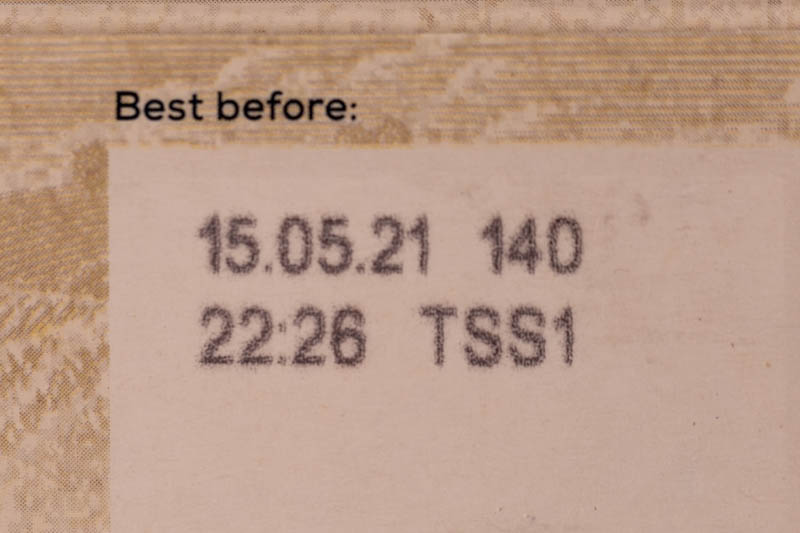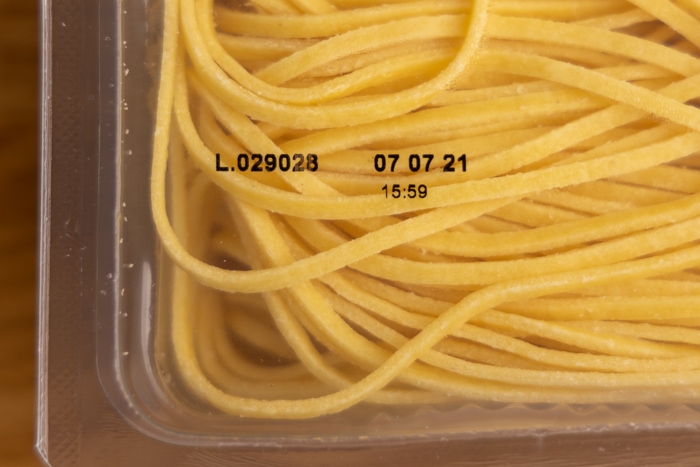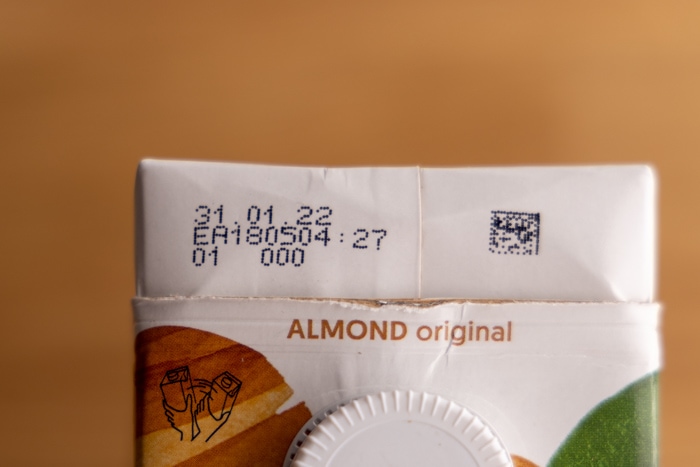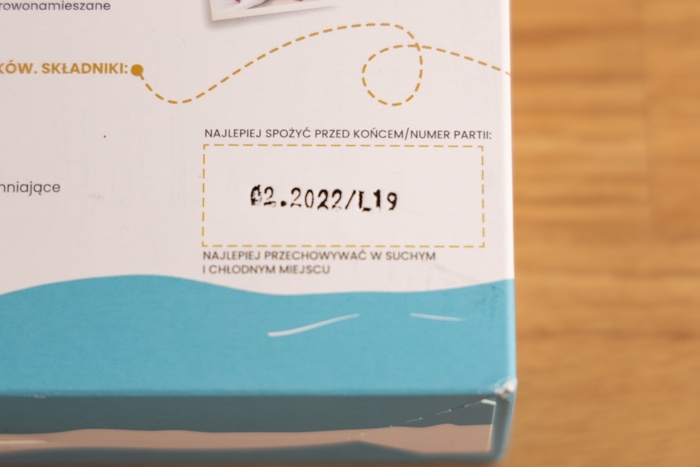How to Read Expiration Dates: 5 Terms and 7 Formats Explained
Not sure how to interpret the date on the label? You’re not alone.
Dating on food products is confusing, and how to go about what’s on the label is often not obvious.
That’s where this article comes in. In it, we go through the most popular terms and phrases and explain how to interpret various date formats.
Let’s start with the terms you can find on food labels.

Common Date Labeling Phrases and Terms
The most common terms used on food labels are:
- Best Before (or Best if Used By). This date indicates how long the product is supposed to retain the best flavor or quality. It’s not a safety date, and most products sold with a best-by date keep quality way past that date.
- Use-By. This is the date by when you should eat the food, as suggested by its manufacturer. It doesn’t mean the food is necessarily bad or unsafe to eat after that date, but you should be more cautious. Use-by dates are usually found on products with a fairly short storage time, like most dairy products. One caveat here: you should treat the Use-By date on infant formula as a safety date.
- Sell-By. This date informs the store how long to keep the food product on the shelves (or when to remove it). It’s aimed at retailers, not consumers. What’s more important to you as a buyer is that “typically one-third of a product’s shelf-life remains after the sell-by date for the consumer to use at home,” as explained by the Institute of Food Technologists.
- Freeze-By. This date informs you by when you should freeze the product to maintain peak quality. It’s way less popular than the other three.
- Expiration Date (or EXP). This date isn’t widely used, but if it’s on your product, you should discard it after that date. While the terms above are vague guidelines, this one is absolute.
If you’re interested in learning more about these phrases, here’s a piece explaining the differences between food dates in more detail.
Now that we’ve covered the different terms and phrases you can find on food labels, let’s talk about date formats.
Date Formats
There are a couple of formats used for dating food products, and most of them are pretty easy to decipher. But there are also a few that are not.
Let’s go through all of them one by one.
(Need help decoding the date format? Check out our date code converter.)
MMDDYY (Standard US Format)

The standard US date format is MMDDYY. In this format, “MM” refers to the month, “DD” refers to the day of the month, and “YY” stands for the last two digits in the year. For example, 032927 means March 29, 2027.
Sometimes, the manufacturers put the “/” sign between parts for ease of reading so that that same date might look like 03/29/27.
DDMMYY (Standard European Format)

The standard date format in Europe is DDMMYY. In this format, “DD” refers to the day of the month, “MM” refers to the month, and “YY” stands for the last two digits in the year. For example, 120526 means May 12, 2026.
Oftentimes, the manufacturers put the “/” or “.” sign between parts for ease of reading so that that same date might look like this: 12.05.2026.
As you can tell, it’s pretty much the same format as the standard US one, except the month and day numbers are switched. That means in some rare cases that 120525 might not mean December 5 (if you interpret it using the standard US format), but May 12 (using the European format).
Unfortunately, there’s no way to tell which is which unless one of the value pairs (MM or DD) is higher than 12. That’s when you know that part refers to the day of the month, and the other pair refers to the month. But if you’re in the US, chances are it’s the standard US format.
MMMDDYY (Month Abbreviated)
In this format, “MMM” refers to the abbreviated name of the month (say Feb for February), “DD” refers to the day in the month, and “YY” stands for the last two digits in the year. For example, Jan 12 26 means January 12, 2026.
Sometimes, the month and day parts are switched around (like in the European format), changing the phrasing to 12 Jan 26.
This format is obvious and easy to decipher, no matter if the month is the first or second part of the date.
DDMMM (Day and Month Abbreviated)
This format combines the day of the month, represented by “DD”, with the abbreviated month name, denoted by “MMM” (e.g., Jan for January). An example would be 15 Nov, which translates to November 15.
This format is frequently paired with use-by dates for items with a brief storage duration. When a product’s shelf life spans just a week or two, specifying the year becomes redundant.
MMMYYYY (Month and Year)

Here, “MMM” stands for the abbreviated month name (like Aug for August), while “YYYY” indicates the full year. An example is Nov 2024, which means November 2024.
This intuitive format is common for products with extended shelf lives. Consider oats, which remain fresh for several months. The quality difference between the 15th and 30th day of the “expiration” month is negligible. As such, the day is omitted in this format. Thus, “Nov 2024” should be interpreted as “up to the end of November 2024”.
Sometimes, a slight variation of this format is used: MM.YYYY, where instead of the abbreviated name of the month, its number is used. There’s typically a dot between the parts for ease of reading.
Julian Date (3, 4, or 5 Digits)
The Julian date, or the Julian day, is a coding system frequently found on items like eggs and canned goods. It’s represented by three to five digits. The last three digits indicate the day of the year. For example, 156 corresponds to June 5th, marking it as the 156th day of the year.
When the code extends to four or five digits, the initial one or two digits denote the year. So, 3156 would be read as June 5, 2023, while 22156 signifies June 5, 2022.
To swiftly decode the three digits representing the date, you can refer to this helpful Julian calendar.
A challenge with the three- or four-digit format is the ambiguity of the year. Taking 3156 as an example, the leading ‘3’ likely refers to 2023. However, if dealing with an older item, it could mean 2013. Conversely, for products with an extended shelf life, it might indicate 2033.
It’s worth noting that Julian date codes are typically not used to indicate storage durations. These are more commonly employed as lot numbers informing when the product was made and aiding manufacturers in future referencing.
A-L Letter and 2 Digits
This format, often used for lot numbers and other reference-type information, doesn’t typically pertain to food safety. Here, the month is denoted by a single letter: A for January, B for February, continuing up to L for December. This letter is followed by a two-digit representation of the day.
For instance, A15 translates to January 15, while L05 signifies December 5.
It’s worth noting that this is a relatively uncommon format, and there’s seldom a need to decode it in everyday situations.
Those are the most popular date formats used on food products. While most of them are quite straightforward, some are a bit difficult to decipher on the go (think the Julian code).
Rotten Records: Share Your Snap!
Caught some food past its prime? Upload your photo to “Rotten Records” and help others spot the signs of spoilage. Every image makes our food community safer and more informed!
